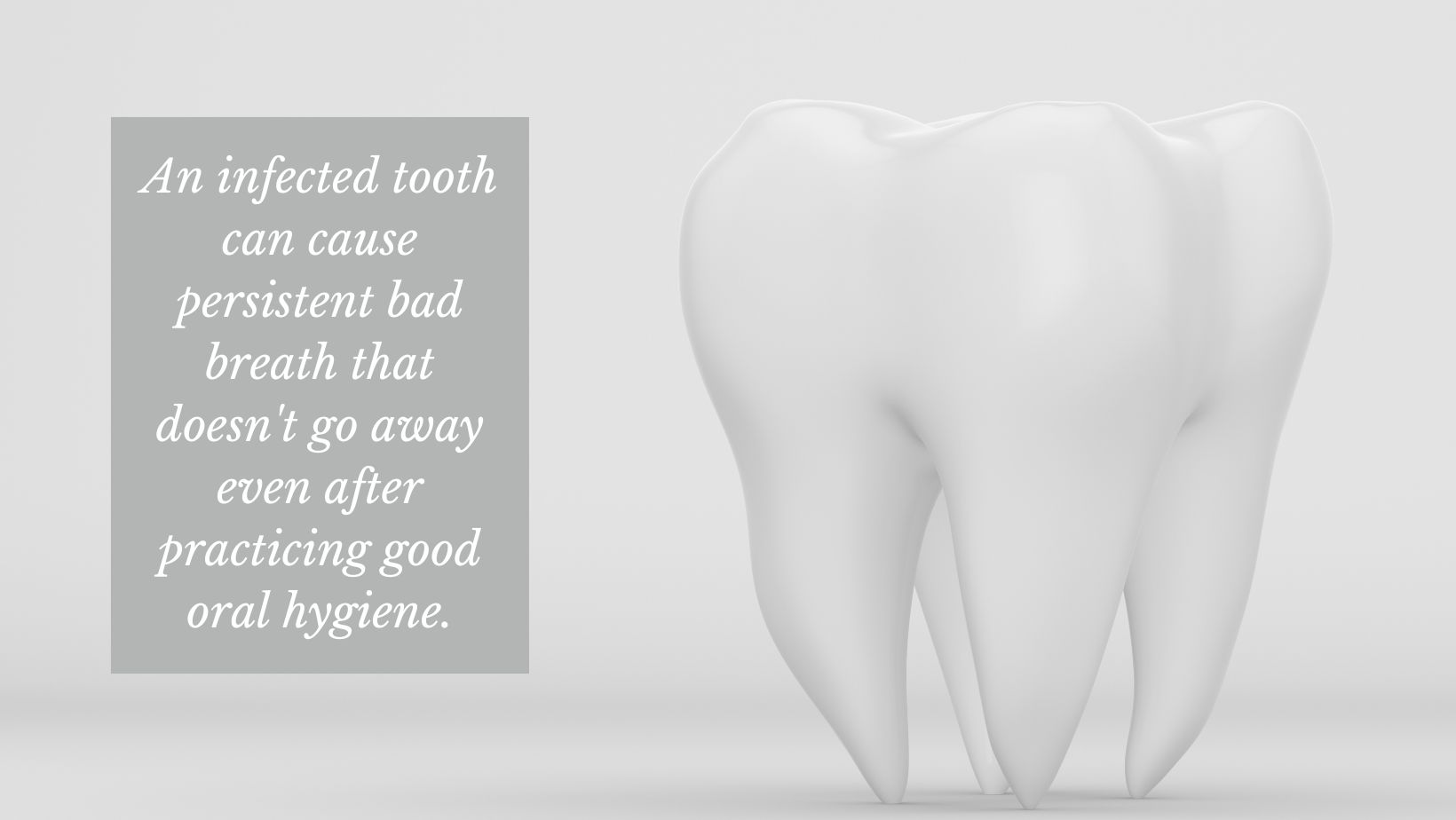A tooth infection is not something to be taken lightly. Tooth infections can cause significant discomfort and potentially lead to serious oral health issues if left untreated. Recognizing the signs and symptoms of an infected tooth is crucial in knowing when to seek prompt dental attention.
Recognizing Tooth Infection Symptoms
Signs of an infected tooth are usually noticeable. Even slight oral discomfort can be enough cause for a person to make a dentist appointment. Here are some of the most typical signs of an infected tooth:
Persistent and Intense Toothache: The tooth pain and sensitivity may start off as a dull ache but can gradually intensify over time. It is often described as throbbing or pulsating and may be accompanied by tenderness and sensitivity to hot or cold temperatures.
Sore Throat: Bacteria from impacted wisdom teeth can spread quickly to the throat. When this happens, it can cause intense throat pain.
Swelling and Sensitivity: Infection can lead to swelling around the affected tooth and surrounding gum tissues. The area may appear red, inflamed, and feel tender to the touch. Increased sensitivity, particularly while chewing or applying pressure, is also common.
Bad Breath and Unpleasant Taste: An infected tooth can cause persistent bad breath that doesn’t go away even after practicing good oral hygiene. Brushing more than usual, flossing hard to reach areas, and swishing mouthwash will not get rid of the bad breath. The foul odor is a result of bacterial activity in the mouth. An unpleasant taste may develop, which can be a sign of an underlying infection.
Gum Abscess: In some cases, an infected tooth can lead to the formation of a gum abscess. A gum abscess appears as a painful swelling filled with pus near the infected tooth. It may cause discomfort while biting or chewing and could even lead to an unpleasant taste in the mouth. Poor brushing habits, an unhealthy diet, and smoking can all contribute to the possibility of bacteria buildup and infection, making an abscess more likely. There are a few types of abscesses to watch out for:
- A gingival abscess can be seen in the gums rather than inside the tooth. Instead of starting at the tooth like a periodontal abscess, the gingival abscess forms on the outer gum tissue known as the gingiva. Gingival abscesses may be isolated to the gum and might not affect a tooth’s health at all.
- A periapical abscess forms at the tip of the root of the tooth. This type of abscess stems from the infected dental pulp at the core. A painful toothache occurs as the result of pus buildup, which causes inflammation.
- Periodontal abscesses form on the outside surface of the tooth rather than in the pulp chamber. As the infection builds, the gum beside the root swells and becomes red and inflamed. The resulting lump on the gum tissue can become very sensitive and sore.
Fever and Fatigue: In severe cases, a tooth infection can spread to the surrounding tissue, causing systemic symptoms. Fever, general fatigue, and a feeling of being unwell may indicate the presence of a spreading infection that requires immediate dental care.

Seeking Dental Care for Symptoms of Infection in a Tooth
If you experience any of the aforementioned symptoms, it is crucial to seek dental care promptly. A dentist will conduct a thorough examination, including dental X-rays, to assess the extent of the infection. Based on the results, the dentist may recommend one or more of the following treatment options:
Root Canal Treatment
If the infection has reached the dental pulp (the innermost part of the tooth), a root canal procedure may be necessary. This involves removing the infected tissue, disinfecting the root canal, and sealing it to prevent further infection.
Extraction
In cases where the tooth is severely damaged or if the infection is extensive, extraction may be the most appropriate course of action. This is done to prevent the spread of infection to neighboring teeth.
Antibiotics
To control the infection and prevent it from spreading, the dentist may prescribe antibiotics. Antibiotics are typically recommended in addition to other treatments or as a temporary measure before performing a definitive procedure.
Incision and Drainage
If an abscess has formed, the dentist may need to drain it to relieve pain and pressure. This involves making a small incision in the gum tissue to allow the pus to drain out. Once the abscess is drained, the dentist will clean the area and may prescribe antibiotics to ensure complete healing.
After the initial treatment, it is essential to follow the dentist’s instructions for post-treatment care. This may involve taking prescribed medications, maintaining good oral hygiene practices, and attending follow-up appointments to monitor the healing process and ensure the infection is fully resolved.
It’s important to note that the specific treatment plan will vary depending on the individual case, the severity of the infection, and the patient’s overall oral health. A good dentist will assess each situation carefully and recommend the most appropriate treatment to address the infection and restore oral health.
Signs of an Infected Tooth? See a Dentist Right Away
Brushing the signs of an infected tooth aside can have serious consequences for your oral health and overall well-being. By being aware of the symptoms and promptly seeking professional dental care, you can prevent further complications and receive appropriate treatment. Never hesitate to consult a dentist if you suspect a tooth infection. Your dental health is worth it.


